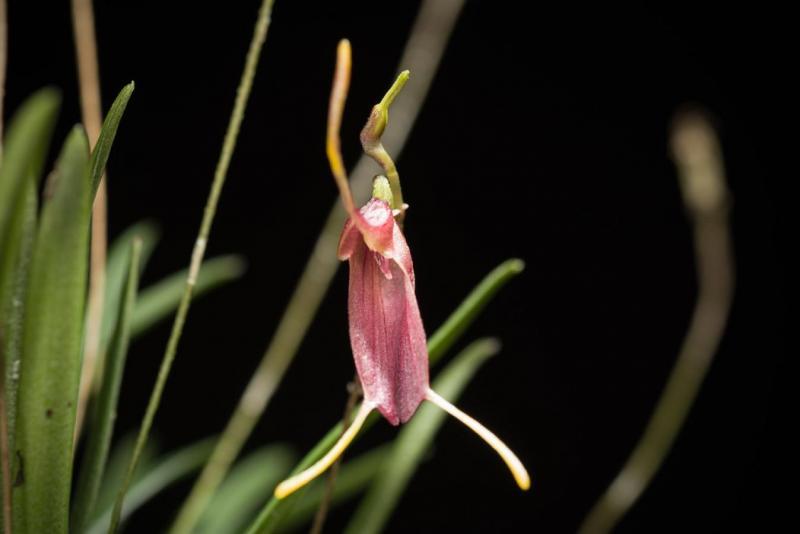Trisetella triglochin
Also known as: The Three Barbed Trisetella or Triaristellina tridactylites Triaristellina trichaete Triaristellina huebneri Masdevallia trichaete Triaristella huebneri Trisetella trichaete Triaristella trichaete Masdevallia triseta Masdevallia tridactylites Masdevallia allenii Trisetella tridactylites Triaristella tridactylites Masdevallia huebneri Trisetella huebneri in the subfamily: Epidendroideae
Native to: Amazonas - Brazil Amazonas - Colombia Amazonas - Peru Antioquia - Colombia Departamento del Huila - Colombia Ecuador Mato Grosso do Sul - Brazil Panama Pasco - Peru Provincia de San Jose - Costa Rica Sao Paulo - Brazil
General Information
The Three Barbed Trisetella is a miniature sympodial cool to warm growing epiphytic or lithophytic orchid belonging to the sub family Epidendroideae native to Brazil, Colombia, Peru, Ecuador, Panama, and Costa Rica. The name refers to the three sepaline tails.
Plant Description
Sympodial. Grows to 7.5cm. Each new growth has a single leathery leaf that grows to 0.1-7cm long. Pseudobulbs grow to 0.2-0.6cm. The plant forms clusters over time
Substrate(s)
- Coarse
- Spaghnum Moss
- Perlite
Care Notes
These orchids like to be watered regulary, especially during warm weather, and prefer a well draining mix or also do well mounted, provided they can be watered daily or even many times a day.
These are quite a forgiving orchid, there are no special requirements to get this orchid to flower, just good care and consistent conditions. Larger plants may be more fussy and can react poorly to change; a poorly timed repotting, a pest infection or an unusually hot day can set them back for a couple of years. However, even plants that have been treated poorly can thrive, and if they are set back they often recover much stronger then they would otherwise be.
Climate
Grows at low to high elevations. Rainfall ranges from 203mm to 381mm per day, heaviest in October and lightest in July. Humidity ranges from 87% to 89%, highest in January and lowest in February. Temperature ranges from 12C to 23C, highest in March (13C to 23C) and lowest in January (12C to 21C).
Watering
These orchids prefer a wet-dry cycle between waterings, they should be watered frequently but only when the moisture is approaching dryness, where the pot feels light and/or the media looks dry. Keep an eye on mounted orchids in warm weather as they may dehydrate quickly.
Keep moisture levels up during hot weather as the plant is prone to dehydrationFertiliser
Apply liquid based fertiliser per recommended directions. They can benefit from a high phosphate fertiliser leading up to flowering season, followed by a high nitrogen fertiliser when new growth appears, and a balanced fertiliser in other times. These orchids can also tolerate slow release fertiliser applied 1-2 pellets per cup (250ml) of media.
Apply fertiliser regularly at half strength year round. Use a high Nitrogen fertiliser during Spring and Summer. Use a high Phosphorous fertiliser during Summer.Potting
These plants are quite forgiving and will do well repotted ever 2-3 years. The mix should be coarse, well draining, and allow space for air to move and for roots to grow.
Alternatively, these plants will also do well mounted to tree fern or cork slabs, or mounted to trees.
Best time for repotting or mounting the orchids is the end of winter when new growths start to appear. Avoid repotting during hot weather,
Use water retentive media such as moss to prevent roots from drying out quickly This plant does well mounted to Cork slabs. Repotting is best done annually.









